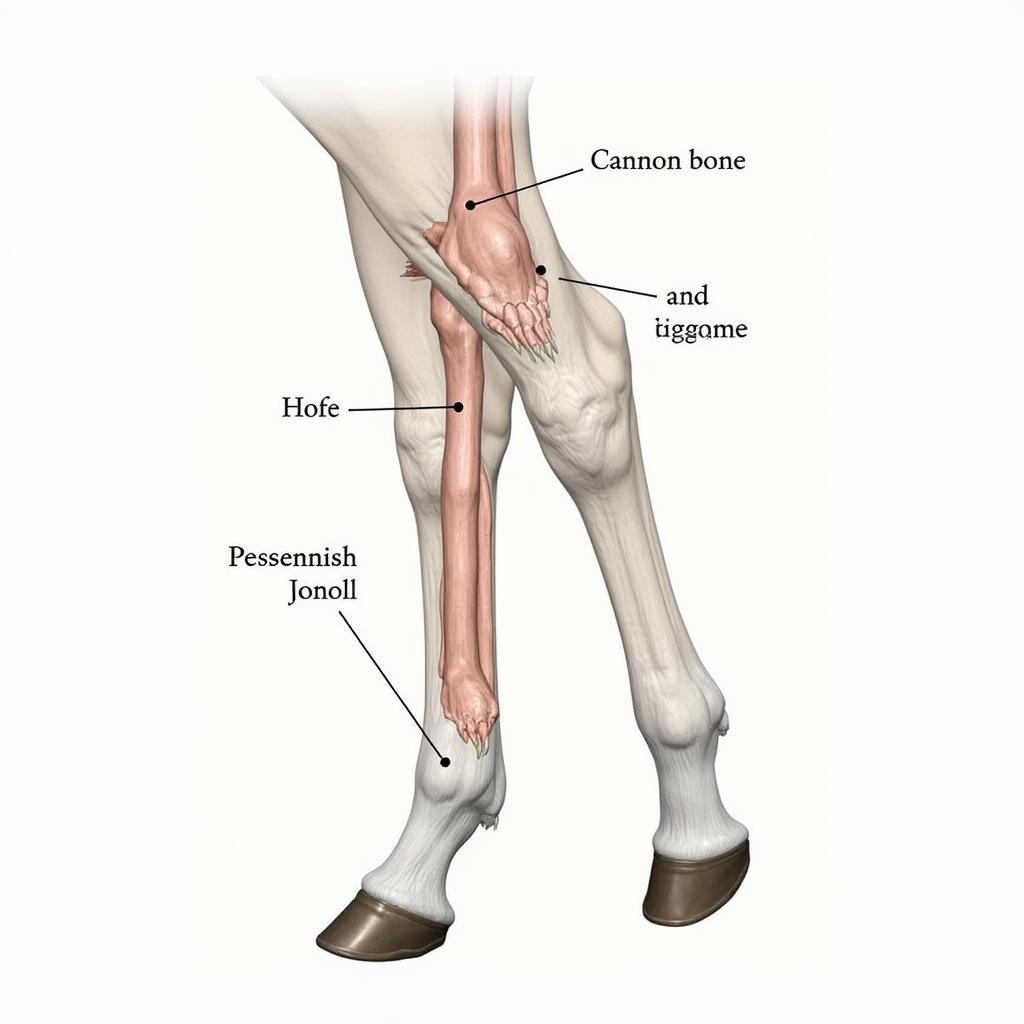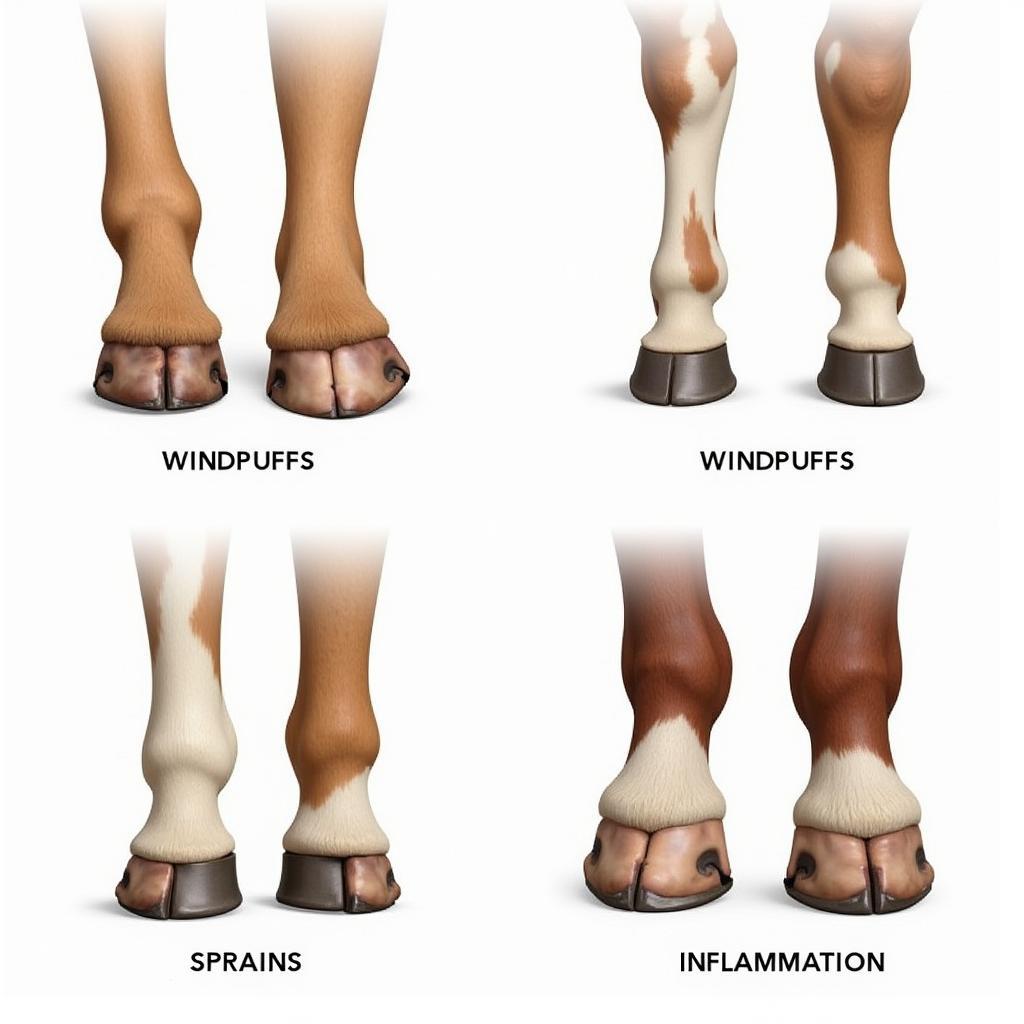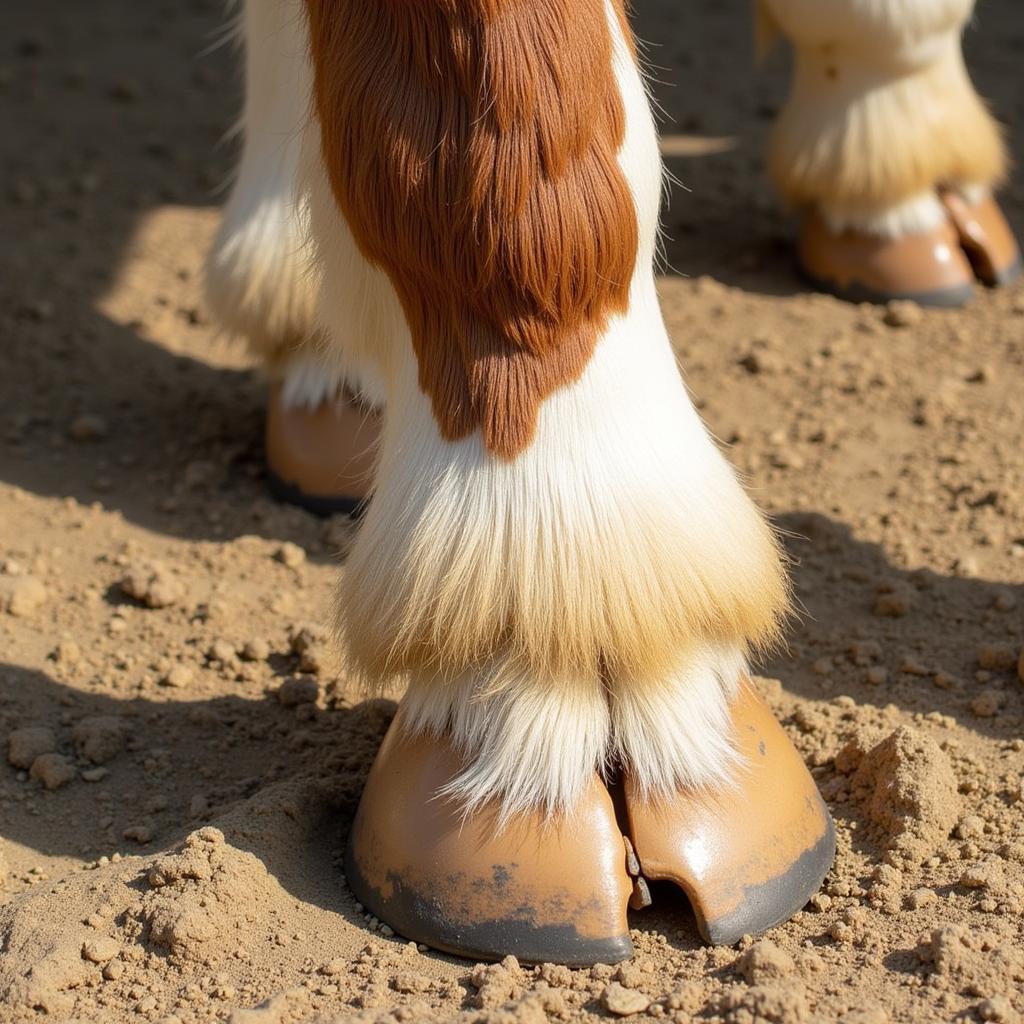A horse’s fetlock is located on the lower leg, between the cannon bone and the pastern. It’s a crucial joint for absorbing shock and allowing flexibility, similar to an ankle in humans. Understanding its location is fundamental to proper horse care and recognizing potential injuries. You can find helpful resources about horse fetlock support on our website, such as fetlock horse boots.
Understanding the Horse’s Fetlock Joint
The fetlock joint is a complex structure, composed of several bones, tendons, and ligaments. It plays a critical role in the horse’s movement, enabling both power and agility. The joint’s precise location is just above the hoof, below the long cannon bone, and above the short pastern bone. Think of it as the equivalent of the human ankle, responsible for absorbing impact with each stride. This area is particularly vulnerable to injury due to the stresses placed on it during running and jumping.
Why is Knowing the Fetlock Location Important?
Knowing the exact location of the fetlock allows horse owners to:
- Identify potential injuries: Swelling, heat, or lameness in the fetlock area can indicate injury.
- Apply appropriate support: Ankle rollers for horses can provide support and prevent injuries, especially during strenuous activity.
- Administer proper care: Applying horse wrap tape correctly around the fetlock is crucial for bandaging and supporting injured areas.
- Communicate effectively with veterinarians: Accurate descriptions of injury locations facilitate better diagnosis and treatment.
 Horse Fetlock Anatomy Diagram
Horse Fetlock Anatomy Diagram
Common Fetlock Injuries in Horses
Several injuries can affect the fetlock joint, some more common than others:
- Windpuffs: Small, fluid-filled swellings around the fetlock.
- Fetlock sprains: Injuries to the ligaments supporting the joint.
- Fractures: Breaks in the bones forming the fetlock.
- Sesamoiditis: Inflammation of the sesamoid bones within the joint.
Proper care and early intervention are crucial in managing these injuries. Knowing where the fetlock is located is the first step in recognizing and addressing potential problems.
Protecting Your Horse’s Fetlocks
Protecting the fetlocks is essential for maintaining a horse’s soundness and overall health. Here are a few preventative measures:
- Regular exercise: Builds strength and improves joint flexibility.
- Proper footing: Avoid working horses on hard or uneven ground.
- Supportive bandaging: Horse ankle boots offer additional support and protection during exercise.
- Nutritional support: Ensuring the horse receives adequate nutrients for joint health.
 Common Horse Fetlock Injuries
Common Horse Fetlock Injuries
The Role of the Fetlock in Horse Movement
The fetlock plays a vital role in the horse’s graceful and powerful movement. It acts as a shock absorber, cushioning the impact of each stride, especially at higher speeds. The flexibility of the fetlock also allows the horse to adjust its stride length and navigate different terrains. Understanding the mechanics of the fetlock helps appreciate the complexity and elegance of equine locomotion. Understanding the flexor tendon horse is equally important for optimal care.
What does a horse’s fetlock feel like?
The fetlock should feel firm and smooth, with no obvious signs of swelling or heat. It’s important to regularly check your horse’s fetlocks for any abnormalities.
 Healthy Horse Fetlock
Healthy Horse Fetlock
Conclusion
The horse’s fetlock is a vital joint located on the lower leg, between the cannon bone and pastern. Understanding its location and function is essential for providing proper care and recognizing potential injuries. Regularly checking your horse’s fetlocks can help ensure their long-term health and soundness. Remember, a healthy fetlock is crucial for a happy and active horse.
FAQs
- What is the purpose of a horse’s fetlock? The fetlock acts as a shock absorber and allows for flexibility in the horse’s leg.
- How can I protect my horse’s fetlocks? Regular exercise, proper footing, and supportive bandaging can help protect the fetlocks.
- What are some common fetlock injuries? Windpuffs, sprains, and fractures are common fetlock injuries.
Other potential questions horse owners might have include inquiring about specific fetlock injuries and treatment options, the best types of support boots for different disciplines, and recognizing subtle signs of fetlock problems. You can find more helpful resources on our website related to horse leg care and other important equine health topics.
When you need assistance, please contact us at Phone Number: 0772127271, Email: [email protected] Or visit us at: QGM2+WX2, Vị Trung, Vị Thuỷ, Hậu Giang, Việt Nam. We have a 24/7 customer care team.